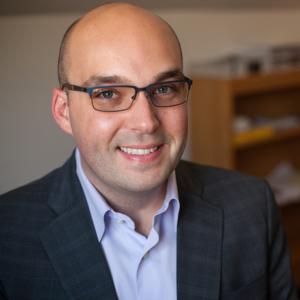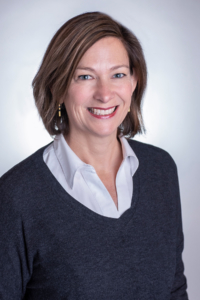
The iconic Sample Gates are a familiar Indiana University landmark for many Kelley School students. Courtesy photo
Over the last several years, #MeToo, #TimesUp and other movements have exposed entrenched problems surrounding sexual misconduct, harassment, and even sexual assault in the workplace. Meanwhile, issues of gender inequality have been researched and talked about for decades — both in business schools and in businesses themselves.
Still, the needle has hardly moved for either.
A new research and education center at Indiana University hopes to change that. Last week, IU, home of the Kelley School of Business, announced the establishment of the Kinsey-Kelley Center for Gender Equity Business. The center will work through research, education, and training to help create work that is safer and more equitable.
“Education is key in creating a culture where everyone is valued for their contributions and feels safe in their work environment,” says Kelley dean Idalene Kesne in the school’s announcement for the center. “Through the work of the Kinsey-Kelley Center, we can begin to empower women and others to become agents of change.”
The center grew out of an innovative partnership between the business school and the Kinsey Institute, IU’s world-renowned research institute on issues in sexuality, gender, and reproduction. This partnership included joint research projects and teaming up to teach classes for both undergraduate and MBA students. Those efforts will expand with the creation of the new center which will sit within the Kelley School’s new Institute for Advancing Diversity, Equity, Inclusion and Belonging in Business.
CENTER CREATED THROUGH PHILANTHROPIC GIFT
Pam Meyer Yttri, an IU alumna and active member of IU’s Women’s Philanthropy Leadership Council, provided the center’s initial funding and the creation of its directorship. The retired school teacher has served on several community and corporate boards, including 29 years at a national bank.
“I have experienced, witnessed and heard stories about the challenges faced by many women through the years,” Yttri says in the announcement. “Since I’ve seen corporations often take needed initial steps toward social change, why not gender equity? I thought the Kelley School of Business was a place to start, and as a collaborative effort with the Kinsey Institute, it’s perfect. If we can teach students how to be more inclusive, it will carry over into the business world and beyond. It is the best legacy I can leave.”
Poets&Quants spoke to April Sellers and Justin Garcia about the new center, its three focus areas, and the business case for diverse, equitable, and safe workplaces.
Sellers is the clinical professor of business law and ethics at Kelley and the inaugural Pam Meyer Yttri Director of the Kinsey-Kelley Center for Gender Equity in Business. Garcia is the executive director of the Kinsey Institute and Ruth N. Halls Professor of Gender Studies. Our conversation has been edited for length and clarity.
Justin, can you tell us a little bit more about the Kinsey Institute?

Justin Garcia, Kinsey Institute
Garcia: The Kinsey Institute was founded in 1947, so it’s our 75th anniversary this year, and it’s the most prominent, largest, and oldest sexological research institute in the world. We have a multidisciplinary team of researchers, and I use the word multidisciplinary purposefully, because the idea is that although there is interdisciplinary work, we pull from disciplines. So rather than being within a particular school, we have faculty with ties to business and law, like Sellers, we have people in psychology, neuroscience, anthropology, sociology, who’ve studied different issues around human sexuality, relationships, gender, and reproduction.
We also have a collection with over 600,000 items. It’s the largest research collection of sexuality related materials in the world. The joke is it’s the only place that has more erotic art than the Vatican. Really it’s a research collection, so it’s a storied institute in that regard, in part because of its longevity.
April, tell us a little bit more about this partnership between Kelley and Kinsey, and how it developed.
Sellers: For a few years now, some of us at Kelly have partnered on teaching with faculty members at Kinsey, in particular a sexual harassment class to MBA students. That traditionally has been offered as a one-week intensive elective course in our full-time MBA program. I also have worked with a Kinsey faculty member in my undergraduate class called “Law and Ethics at Work.”
This is kind of a natural outgrowth of that work to expand the partnership and to explore ways to take advantage of the expertise of Kinsey as well as the expertise of folks at Kelly. In particular, we plan to conduct research, education, and training in the areas of sexual harassment, discrimination, gender identity, sexual orientation, and relationships at work. There’s sort of no end to the potential areas of overlap.
Why do you think it makes sense for an institute like Kinsey to partner with a business school?
Garcia: One, Kelly has absolutely fantastic colleagues. I think, in addition to having the right people in the right place, it’s also the right organizations in the right place. One of the things that I’ve always been interested in is in the social behavioral sciences, there’s people working on sexual misconduct and harassment, but that really hasn’t been applied to industry settings, or sexual violence on college campuses, or in the military, or harassment in companies. The numbers are sort of the same as they were in the 70s. The needle, at least on the sexual misconduct side, has really not moved. When we look at our colleagues on the business side, they recognize this is a problem and haven’t necessarily had the tools to move the needle.
I think it really is a case that, independently, neither groups were able to make much progress. But, when we get together, we can really start to think about how do we apply the research to actual settings? How do we train the next generation of managers? I think we have this grand theory that all of these business students are going to leave here and have a proper understanding of sexual harassment and misconduct, and not just a one-hour training that companies do for legal liability that we all know don’t work. I think from that perspective, it’s a true partnership. We need each other’s expertise to move that needle.
Why do you think the needle isn’t moving? Like you said, issues like gender parity, sexual harrassment and misconduct, they’ve been talked about for decades.

April Sellers, Kelley School
Sellers: I want to have an answer to that, but I don’t think there is one answer. Partly, we just don’t have enough gender diversity in workplaces still. Women are well represented in business schools, in graduate programs, and in all types of organizations, but there are not nearly enough women in leadership or on boards of directors. The progress is depressingly slow. Globally, the latest numbers I’ve seen on women on boards is like 19%.
We know that the number of board members who are women goes up when there’s a female CEO. So there’s a correlation between men and leadership, and whether there are many women in leadership in the organization.
I guess, by my answer, you can see that I put a lot of that blame on just sheer numbers, on the scarcity of women in leadership roles. It has such a profound effect on who gets promoted, who gets asked to be on the board, and so on.
What is the business case for having more women in leadership positions?
Sellers: Well, at this point, that data is beyond established: Organizations all do better when they are diverse. I think we have pretty universal agreement among businesses now that they want diversity in their ranks. We need to, I hope, help them make actual advances in getting there because most of them really want to and they’re looking for more tools all the time to help them do it.
What are some of the outputs you envision from the center?
Garcia: So it’s interesting that you said business case. I think to Sellers’ point, we are looking at how do we make sure that we give students, both the undergraduates and the graduate students, but also our colleagues, peers, as well as industry and corporate partners, the tools to do this? How do they understand that diversifying in terms of gender, sexuality, and recognizing relationships is not just good PR, it’s actually good business bottom line.
So, one of our outputs is really trying to show how we train the next generation of business leaders. How to have a whole cohort of business students who are more skilled on these issues. But also for the faculty that are part of the center, we’re collaboratively writing case statements together now. These are tools that we can use in the classroom here, but that can also be used by other business schools and other university programs. We did a big study on how the #MeToo movement has changed people’s behavior at work and relationships.
So there will be several different outputs: One on the education/students side, one on the research side, and then also on the training side, both in the classroom and outside with the case statement.
Next page: How #MeToo thrust the issues to the forefront + What it means for business students











Questions about this article? Email us or leave a comment below.